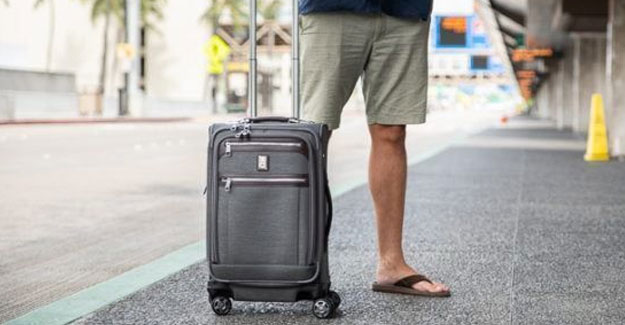
Luggage Makers Set To Travel Past Pre-Pandemic Revenues: CRISIL
Operating profitability to rise 150-200 basis points this fiscal; credit outlook stable. Luggage makers are set to wheel in on-year revenue growth of 45-50% this fiscal on the back of pent-up tourism demand, resumption of corporate travel, reopening of schools/colleges/offices, and limited restrictions on festivities and social events. That would be 5-7% more than in fiscal 2020, or just before Covid-19 arrived. Operating margin should recover by 150-200 basis points to 11.5-12.0%, supported by higher capacity utilisation and better absorption of fixed cost, price hikes and change in product mix in favour of the higher-margin hard-luggage segment. That said, increased promotion and marketing expenses and higher input prices will keep margin well below the pre-pandemic level of around 15%. Prices of crude-linked raw materials such as polypropylene, polycarbonate and polyamide, which comprise over half the cost of making luggage, have risen steeply over the past two fiscals. Polypropylene, for instance, is almost 60% dearer. Net-net, better operating profits and continuing strong balance sheets will keep the credit risk profiles stable, an analysis of three CRISIL-rated luggage makers that account for approximately 90% of the organised sector’s revenue, shows. The organised segment accounts for about half of the sector’s revenue of Rs 5,600 crore. Says Naveen Vaidyanathan, Director, CRISIL Ratings, "The revival in business and leisure travel, normalisation of flight schedules, and students moving abroad for studies are encouraging signs. Air traffic, a key indicator of luggage demand, was already at 86% of the pre-pandemic level this April. Besides, demand will also benefit from increased purchases during the wedding season and the low-base effect of last fiscal, which was impacted by the second and third waves of the pandemic." Organised luggage makers will benefit from the issues plaguing the unorganised segment, which primarily offers soft luggage (mainly Chinese imports) for the mass market. Unorganised luggage makers were still feeling the heat following the implementation of the Goods and Services Tax when the pandemic hit. A shift in customer preference towards hard luggage, which fetches higher realisations, has also lent traction to the organised segment. The market share of hard luggage is seen rising to 50-55% this fiscal versus 30-35% in fiscal 2020. Consequently, realisations are expected to improve ~15% over the pre-pandemic level. Luggage volumes though, will still remain about 5-10% below levels seen in fiscal 2020. Luggage makers are also cutting dependence on China for raw materials and traded soft luggage by setting up backward-integrated facilities in India and Bangladesh. This will also support operating margin over the medium term. Given the tailwinds, the hard-luggage segment is expected to see capacity expansion of 30-40% over the medium-term, largely funded by better cash accruals and liquid surpluses. Says Shounak Chakravarty, Associate Director, CRISIL Ratings, "Over the past two fiscals, stringent cost-control measures, efforts to backward-integrate, sharper focus on value-added products, and strong balance sheets have supported the credit risk profiles of luggage makers, even as revenue plunged 60% in fiscal 2021 and recovered only partially last fiscal. Gearing levels will stay comfortable this fiscal at 0.1-0.2 time versus 0.11 time last fiscal, and interest coverage will be healthy at over 8 times versus over 7 times last fiscal." That said, any further waves of the pandemic leading to lockdowns or curbs on air travel, and sharp movement in crude-linked input prices will remain the key monitorables.
Textile Excellence
If you wish to Subscribe to Textile Excellence Print Edition, kindly fill in the below form and we shall get back to you with details.








